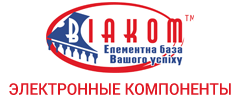Збирач потоків
EMC compliance spanning instruments, software, and systems

A variety of electromagnetic compliance (EMC) testing solutions—standalone instruments, software, and systems—will be on display at Rohde & Schwarz’s booth during IEEE EMC Europe 2025 symposium held at Sorbonne Université in Paris from 1-5 September 2025.
Start with HF1444G14, the new high-gain electromagnetic interference (EMI) microwave antenna covering 14.9 to 44 GHz. It will be paired with the company’s ESW EMI test receiver to demonstrate full compliance testing with a single measurement. The ESW EMI test receiver, boasting an FFT bandwidth of up to 970 MHz, facilitates measurements of CISPR frequency bands C and D in a single sweep.

Figure 1 The ESW EMI test receiver offers a wide measurement bandwidth and high dynamic range. Source: Rohde & Schwarz
Next, the EPL1007 EMI test receiver, supporting frequency ranges up to 7.125 GHz, can be either used for EMI pre-compliance testing or as a CISPR 16-1-1 compliant receiver. It’s a portable device that can operate on batteries, which makes it suitable for a wide range of testing environments.

Figure 2 The EPL1007 EMI test receiver is suitable for conducted and radiated measurements. Source: Rohde & Schwarz
Then there is the ELEKTRA test software, which automates EMC testing for EMI and electromagnetic susceptibility (EMS) measurements of an equipment under test (EUT). The software simplifies test configuration, speeds up test execution, and generates comprehensive test reports. Rohde & Schwarz will demonstrate new features of this test software, including the latest capabilities for immunity testing in reverberation chambers.

Figure 3 The ELEKTRA test software captures the entire system to measure EMI emissions and EMS immunity. Source: Rohde & Schwarz
Moreover, the Munich, Germany-based test and measurement company will also demonstrate EMI debugging on its oscilloscopes and probing solutions. Rohde & Schwarz’s MXO 5 oscilloscopes—featuring an update rate of more than 4.5 million wfms/s and more than 45k FFT/s for spectrum analysis—will be paired with the isolated probing system RT-ZISO to allow users to debug digital and power electronic devices quickly.
Rohde & Schwarz will also present four technical sessions at the conference.
Related Content
- EMI test considerations for power supplies
- EMC pre-compliance testing ups success rate
- Avoiding EMC Failure Through Pre-Compliance Testing
- EMC antennas for troubleshooting and pre-compliance testing
- EMI emissions testing: peak, quasi-peak, and average measurements
The post EMC compliance spanning instruments, software, and systems appeared first on EDN.
Power Integrations rolls out reference design kit for solar race cars featuring high-efficiency GaN IC
Plessey Semiconductors acquired by Haylo Labs
Rocket Lab expands US investments for national security programs and semiconductor manufacturing
Innoscience and United Electronics establish joint lab to develop GaN power electronics systems for EVs
Govt Sanctions 23 Chip Design Ventures Under DLI Scheme
MeitY approved 23 chip design projects under its Design Linked Incentive (DLI) scheme, thus strengthening the semiconductor design ecosystem in India. This favors domestic start-ups and MSMEs that work on chips applicable in surveillance cameras, smart energy meters, among others.
Alongside these approvals, 72 companies now have access to industry-grade EDA tools to shorten development time and improve design capabilities in India.
One of the beneficiaries is Bengaluru-based Vervesemi Microelectronics, which is designing integrated circuits for smart energy, motor control, and aerospace. Its forthcoming designs include chips for weighing scales, energy meters, small appliances, electric vehicles, and avionics.
Vervesemi is developing ICs for strategic and consumer applications, including ASICs for weighing scales, smart energy meters, BLDC motor controllers, EVs, drones, and aerospace systems. Sampling for most designs is expected between late 2025 and 2026.
The company mentioned that these efforts display India’s growing ability to design high-performance, Made-in-India ICs for the strategic and consumer market in import substitution and raising the country’s stature at a global level in the semiconductor field.
The DLI program is at the core of India’s $10 billion semiconductor mission, which aims to reduce reliance on imports while simultaneously fostering domestic talent and creating a robust ecosystem for chip design and development.
The broader impact of the DLI scheme is already visible, as India moves toward building a robust fabless semiconductor ecosystem. By empowering startups and MSMEs with access to Electronic Design Automation (EDA) tools and financial incentives, MeitY is laying the groundwork for a self-reliant design-to-deployment pipeline. Experts believe that this momentum, combined with strategic investments and global partnerships, could help India emerge as a competitive force in the global semiconductor supply chain, reducing reliance on imports and boosting domestic innovation.
The post Govt Sanctions 23 Chip Design Ventures Under DLI Scheme appeared first on ELE Times.
Innoscience launches new SolidGaN devices, boosting power efficiency by 50%
Rare Earth Export Curbs Lifted by China: India’s Semiconductor and Electronics Sectors Poised to Benefit
India’s electronics sector, one of the major achievements under the Make in India initiative, could witness long-term benefits following China’s decision to ease export restrictions on rare earth metals and critical minerals.
Rare earth elements (REEs) comprise the very stuff in a myriad of devices-hardly just companies assembling smartphones, laptops, gaming consoles, and electric vehicles, but also advanced display technologies. Rare earth elements (REEs) were an eternal source of limited supply, coupled with China dominating the supply chains worldwide, thereby posing an impediment to global electronics manufacturers.
The relaxation in export restrictions by China could go a long way in reducing supply constraints in India thus helping the domestic industry grow faster, and in removing supply-chain bottlenecks-according to experts of the industry. This is extremely important in sectors like semiconductors, consumer electronics, and electric mobility, where India aspires to build some competitive advantage.
Industry leaders believe that stable prices for critical minerals should lower production costs and foster further investment in the electronics ecosystem in India, thus quickening the country’s path to being recognized as a-global electronics manufacturing hub.
The change in policy comes at a time when India is enhancing PLI schemes to pull in global multinationals engaged in electronics and semiconductor fabrication. With a better supply assurance for rare earths, India should now find itself better placed to enter into global value chains and curtail its dependence on expensive imports from various markets.
Despite China being India’s strategic competitor, the loosening of export controls unexpectedly highlights global supply chains’ interconnectivity. Analysts say that the way is now clear for the electronics and EV sectors of India to be among the biggest beneficiaries if India continues to develop domestic processing and value addition firms.
The post Rare Earth Export Curbs Lifted by China: India’s Semiconductor and Electronics Sectors Poised to Benefit appeared first on ELE Times.
MeitY May Announce 2–3 Small Semiconductor Projects Soon
The Ministry of Electronics and Information Technology (MeitY) has indicated that two to three small semiconductor projects may soon be announced, using leftover funds from the ₹76,000 crore India Semiconductor Mission (Semicon 1.0). Most of the outlay has already been committed to chip fabrication facilities, the Semiconductor Laboratory in Mohali, and the Design-Linked Incentive scheme.
The government is also working out the framework for Semicon 2.0 with the aim of further mainstreaming the semiconductor ecosystem in India.
The announcement comes as a precursor to SEMICON India 2025, taking place from September 2 to 4 at Yashobhoomi, Delhi, the inauguration of which shall be graced by Prime Minister Narendra Modi. This edition has almost doubled in scale and has attracted more global and state participation, with all exhibition spaces being booked to capacity.
MeitY has further said that the first commercially produced Made-in-India chips may just be out by the end of 2025, with several companies racing to reach this milestone.
Industry observers say the combination of policy support, global partnerships, and rising investor interest has positioned India as an increasingly credible player in the global semiconductor supply chain.
Global players including Applied Materials, IBM, Infineon, LAM Research, Merck, Siemens, TSMC, and Tata Electronics will join the event, underscoring rising international confidence in India’s semiconductor push.
The post MeitY May Announce 2–3 Small Semiconductor Projects Soon appeared first on ELE Times.
❗️ Японська осінь 2025
Запрошуємо на щорічний фестиваль "Японська осінь" Українсько-Японського центру КПІ ім. Ігоря Сікорського! Цього року для вас підготували багато нових цікавинок!
Nuvoton Introduces Automotive-grade, Filter-Free 3W Class-D Audio Amplifier NAU83U25YG
The New High-Efficiency Audio Solution Ideal for Dashboard, eCall, and T-Box Applications
Nuvoton announced NAU83U25YG, a new automotive-grade Class-D audio amplifier. The NAU83U25YG Class-D amplifier features high-efficiency stereo, digital input, and delivers up to 3W (4 Ω load) or 1.7W (8 Ω load) output power. Featuring a two-wire gain adjustment interface, it is the ideal choice for automotive electronics applications such as dashboards, eCall, and T-Box systems.
As automotive electronics enter the era of the “smart cockpit,” vehicle intelligence has become a key industry focus. This trend is driving increasing functional requirements for audio solution providers in automotive applications. Nuvoton Technology strictly adheres to automotive industry standards, offering AEC-Q100 qualified products for automotive applications. To simplify system design, our solutions support digital I2S audio signal input from the vehicle’s main controller, reducing the need for external components and minimizing PCB size. Additionally, our digital amplifiers help prevent circuit interference and effectively solve EMI issues.
The NAU83U25YG stereo Class-D audio amplifier has advanced features like 80 dB PSRR, 90% efficiency, ultra-low quiescent current (i.e. 2.1 mA at 3.7V for 2 channels) and superior EMI performance. It offers lower distortion, reduced background noise, and a wider dynamic range. Additionally, this new amplifier supports comprehensive device protection.
NAU83U25YG Key Features
- Gain Setting via I²C interface, 22 dB to -62 dB
- Powerful Stereo Class-D Amplifier, 2ch x 3.0W (4Ω @ 5V, 10% THD+N)
- Low Output Noise: 18 μVrms @ 0 dB gain
- Comprehensive Device Protection:
- Overcurrent Protection (OCP)
- Undervoltage Lockout (UVLO)
- Overtemperature Protection (OTP)
- Clock Termination Protection (CTP)
- Click-and-Pop Suppression
- Package: QFN-20
- Operating Temperature Range: -40℃ ~ +105℃
- Automotive Grade: AEC-Q100 qualification & TS16949 compliant
Superior EMI Performance, Filter-Free
The NAU83U25YG amplifier stands out by eliminating the need for an external output filter, thanks to its spread-spectrum-oscillator technology and slew-rate control, effectively reducing electromagnetic interference (EMI). Moreover, it offers enhanced immunity and power supply rejection ratio (PSRR) of > 80 dB at 217 Hz. Making the NAU83U25YG an excellent fit for Class-D audio amplifiers in wireless and AM (Amplitude Modulation) frequency band applications.
Leap Forward in Efficiency, Power
The Class-D topology represents a significant leap forward in both power efficiency and noise minimization in audio devices. By generating a binary square wave, Class-D amplifiers efficiently amplify the signal through power device switching. Compared to Class-AB devices, Class-D amplifiers offer power efficiencies that are two-thirds better.
The NAU83U25YG Class-D audio amplifier excels in driving a 4 Ω load with an impressive output power of up to 3W and fast start-up time of just 14 msec.
NAU83U25YG Target Applications
The new Class-D audio amplifier is designed for automotive electronics applications including dashboards, eCall, ADAS (Advanced Driver Assist Systems) and T-Box.
The post Nuvoton Introduces Automotive-grade, Filter-Free 3W Class-D Audio Amplifier NAU83U25YG appeared first on ELE Times.
⏱️ Графік навчального процесу на 2024-2025 навчальний рік
Календар графіку навчального процесу для 1-4 курсів бакалаврського РВО та 1-2 курсу магістерського РВО (ОПП та ОНП) денної та вечірньої форм навчання.
Component organization
 | Just thought I’d share a little organization hack I made on the cheap. Dollar store wire dish rack and dollar store hardware boxes. Less than $10 total and makes organizing components a breeze. [link] [comments] |
An FM Generator Circuit Using the Capacitance of a Collector-Base Junction
I built my first DIY synthesizer!
 | Hi electronics friends! I’ve been working on this project for a few months, and the 1.0 version of my DIY synthesizer is finally here! I documented the whole process on YouTube: 👉 https://youtu.be/B1KDbnlMJYE[link] [comments] |
adapting an IC the hard way
 | For anyone wondering what it is: It's an old Xilinx Spartan II FPGA that was cut from an old custom PCI board. It has been adapted to an prototype board. It's an 8 bit ISA prototype board, however I'm not going to make an ISA card from it. I just ran out of typical prototype boards. I am planning to use this old FPGA to help me make another homebrew computer (glue logic). I am planning this time to make homebrew on a dedicated PCB, so I want to have a playground with that FPGA with all pins reachable to experiment with it before. I could got an adapter, but I couldn't find one locally to get it quickly. This thing took me three days of work in my free time. So, yeah. It works! On last photo teh FPGA is programmed to blink the LED! The RPi Pico acts as JTAG programming cable [link] [comments] |
Accessible breakout boards I built because a visually impaired student of mine couldn't wire circuits with standard components
 | submitted by /u/hey_hey_you_you [link] [comments] |
Weekly discussion, complaint, and rant thread
Open to anything, including discussions, complaints, and rants.
Sub rules do not apply, so don't bother reporting incivility, off-topic, or spam.
Reddit-wide rules do apply.
To see the newest posts, sort the comments by "new" (instead of "best" or "top").
[link] [comments]
A resistor-like capacitor and a capacitor-like resistor
 | submitted by /u/NEET_FACT0RY [link] [comments] |
Size comparison between GMI-2B and GMI-90
 | Recent addition to my collection [link] [comments] |





